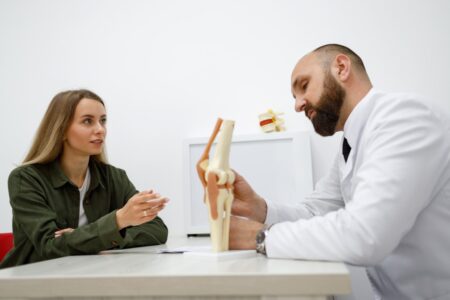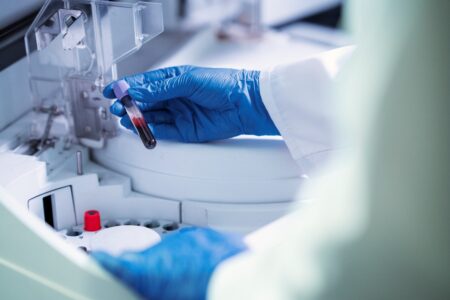Articulo FOB EH Oct 2021
Thursday 1 February 2024

Introduction
Colorectal cancer (CRC) is the most frequent neoplasm in the digestive tract, accounting for 9 to 10% of all cancers worldwide. It is considered to be multicausal, encompassing intrinsic host factors such as genetic mutations, hormonal and immunological conditions, as well as external factors such as unhealthy diets, alcohol consumption, obesity, sedentary lifestyle, smoking and environmental exposure to carcinogens. The clinical manifestations are not very specific, which is why the diagnosis is focused on age-related risk groups and proven family history.

Objcetiv: To identify the diagnostic aids that we can offer from the clinical laboratory as a contribution to the early detection of colon cancer, as well as to make a call to action, to the commitment to do something from our roles to help in the fight against cancer.
The most frequent types of cancer in Colombia, according to the data analyzed for cancer in High Cost Accounts, were defined as the 5 types of cancer with the highest incidence in the country in the adult population during the study period, in their order: breast cancer with 29. 3%, cervical cancer with 7.1%, colon and rectum with 6. 4%, stomach 4.3% and prostate 2.6%.
In this article we will focus on colorectal cancer, since in Colombia there are approximately 5000 new cases of this type of cancer every year, being the third cause of mortality among women and the fourth in men.
90% of cases can be successfully treated if diagnosed in time, if we focus on knowing incidence data, symptoms and risk factors.

Colorectal cancer usually begins with polyps or growth in the mucosa of the intestine producing malignant cells in the innermost layer of the intestine and an abnormal increase in tissue regularly occurs between the ages of 50 and 80 years, however, the way of life, diet, environmental exposure, sedentary lifestyle and obesity are factors that have influenced the appearance of this disease in younger and younger patients.
Although this pathology can arise from genetic causes (family history of colon cancer), these cases account for only 5% of newly diagnosed patients. Most of them suffer from sporadic cancer, that is, they had no history of this disease and are exposed to risk factors.
Talking about prevention and detection implies thinking about two conditions that must be differentiated, one thing is to carry out studies for prevention and another is to carry out studies of patients’ symptoms, which mainly include unknown anemia or digestive bleeding, unexplained weight loss, persistent decrease and alteration in the habit and size of bowel movements, intense pain or frequent abdominal distension, presence of blood in the stool and sensation of unsatisfied evacuation.
If we, from the clinical laboratory, work hand in hand with the medical staff, we can make a great team in the fight against colorectal cancer (CRC).
Let’s start by talking about the algorithm for classifying colorectal cancer risk:
The Ministry of Health has developed a Clinical Practice Guideline (CPG) for the early detection, diagnosis, treatment, follow-up and rehabilitation of patients diagnosed with colon and rectal cancer. They present the algorithm to classify the risk of CRC, presenting the contribution from the clinical laboratory, providing the SOMF test (invasive (fecal occult blood in fecal matter) every two years to people between 50 and 75 years of age, as a non-invasive technique and/or complementing it in case it is positive with colonoscopy as a Gold standard but invasive technique, with monitoring every 10 years.
The following methods are currently available, with different levels of invasiveness:
- SOMFDetection of occult blood, which passes in such small amounts that it can only be detected by the chemicals used in a fecal occult blood test.
- Colonoscopy: Optical colonoscopy involves direct visualization of the colon mucosa from the cecum to the rectum with a flexible endoscope. Insufflation, irrigation and suction facilitate careful inspection of the mucosa. Colonoscopy allows both detection and removal of polyps, which can be sent for histopathological examination. Traditionally, colonoscopy has been considered the gold standard for CRC detection, however, flaws have been found, it is less effective in reducing proximal CRCs compared to distal CRCs due to various factors such as inadequate bowel preparation and/or incomplete colonoscopy, i.e. it is operator dependent.
- Sigmoidoscopy: It is a procedure used to view the inside of the sigmoid colon and rectum. The sigmoid colon is the area of the large intestine closest to the rectum.
- Bario’s Enema is a diagnostic imaging study that uses x-rays to look at your lower gastrointestinal (GI) tract. Your lower gastrointestinal tract includes the large intestine (colon) and rectum.
The diagnostic aids that we can provide from the laboratory are in different modalities, among these tests we have:
Let’s review what is relevant to us in the clinical laboratory. To detect occult blood in feces there are several methodologies:
- Test Guayaco. It is the oldest, best known and most economical method for SOMF detection, however, it has restrictions such as “no red meat, broccoli, beets or uncooked radishes for three days before the test. Some drugs may alter the test result, such as: vitamin C and non-steroidal anti-inflammatory drugs. Its interpretation is subjective, sampling is not standardized and it is often processed by the laboratory assistant.
- FIT: Immunological methods (rapid tests): The cassette sampling technique is simpler and easier to collect compared to guaiac. Only one or two stool samples are required and no dietary or medication restrictions are required prior to testing. Improved accuracy in terms of CRC detection. A disadvantage of FIT is its more expensive cost compared to guaiac. Although FIT is easier to collect, its sensitivity decreases with any delay in sample shipping or processing. In addition, similar to other non-invasive tests, if the test is positive, a follow-up colonoscopy would be required.
- Fecal Immunological Test of Hemoglobin by Turbidimetry (Fit): Another option we have are the immunological tests by turbidimetry, they are methods that are performed in a fully automated equipment that works with a calibration curve, it is controlled every day so we will have the test monitored. It is very specific for lower gastrointestinal bleeding, it does not require diet restriction, it does not interfere with medications and its results are quantitative, facilitating the interpretation of the operator and the medical staff. In addition, the sample is standardized in a collection device.
- Finally, we present another much more specific and sophisticated option for SOMF detection, the multi-target stool DNA test that uses specific biomarkers to ensure the highest levels of sensitivity to determine the presence of some mutations. In a study, it proved to be more sensitive than the FIT test, detecting 21% more precancerous lesions.
The review of this topic is an invitation to participate more in promotion and prevention programs as health professionals, to work on screening for colorectal cancer with the tests that exist in the market. With this knowledge, we can propose that we work on these programs and together we can reduce cancer mortality and high-cost bills.



